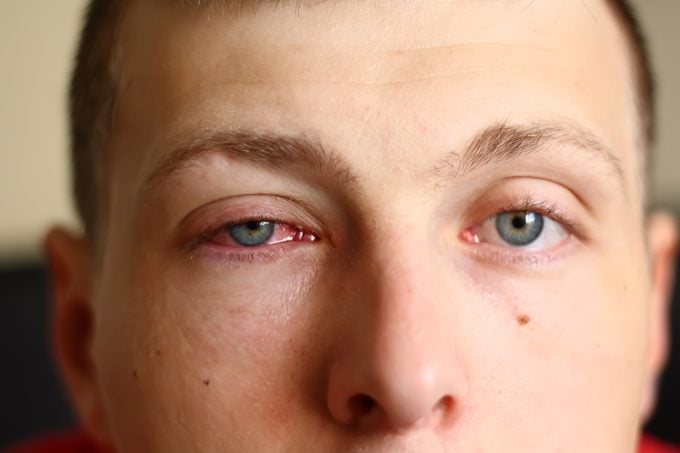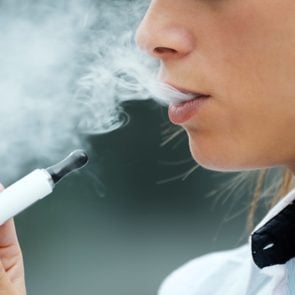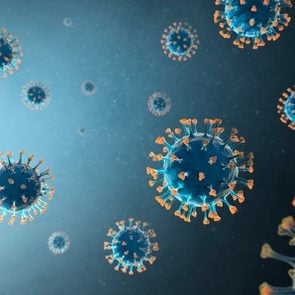Is Pink Eye a Symptom of Covid?
Updated: Sep. 21, 2021
Pink eye may not be a common symptom of Covid-19, but it is a potential symptom. Here's what you need to know.
Covid-19 symptoms go beyond coughing
By now, we’re familiar with the most common symptoms of Covid-19: shortness of breath, coughing, and fever.
Still, experts are discovering other, less common, and perhaps more surprising symptoms: conjunctivitis, aka pink eye.
Sonal Tuli, MD, clinical spokesperson for the American Academy of Ophthalmology, estimates that about 5 percent of Covid-19 patients develop this eye symptom.
If you develop pink eye, don’t immediately assume you have Covid-19, but don’t dismiss the possibility either.
“In this day age, we have to be thinking about Covid-19,” notes Rahul T. Pandit, MD, associate professor of clinical ophthalmology with the Blanton Eye Institute at Houston Methodist.
What is conjunctivitis?

Conjunctivitis, or pink eye, is an umbrella term, says Dr. Tuli. “We look at pink eye as this bucket into which you put anything that causes your eye to get red or pink,” she explains.
Viruses are the most common reason for conjunctivitis, but bacteria and allergies are also potential culprits.
Typically, there are other symptoms as well: watery eyes, feeling like there’s a foreign object in your eye, as well as itching or burning in addition to pinkness or redness. (Learn more about conjunctivitis symptoms.)
What’s the connection between pink eye and Covid?
Given that viruses are the most frequent cause of pink eye, it makes sense that SARS-CoV-2, the virus that causes Covid-19, could be among them.
And like your nose and mouth, your eyes are lined by mucous membranes (conjunctiva), the primary way SARS-CoV-2 and other viruses enter your body. That’s why healthcare workers are required to wear face shields and goggles.
It’s unclear if the virus can be transmitted through eye fluid, although SARS-CoV-2 is detectable in tears.
How would I know pink eye is from Covid-19?
Because symptoms are largely the same regardless of what’s causing the pink eye, there really isn’t a good way to know, says Dr. Tuli.
Covid-related conjunctivitis also isn’t linked with a specific stage of Covid (early or late) or with severity, says Dr. Pandit, who has treated Covid patients with conjunctivitis.
You need to look at the bigger picture. If you have conjunctivitis in tandem with other symptoms of Covid-19 like a fever, cough, shortness of breath, and loss of smell or taste, you could suspect Covid-19, says Louis Morledge, MD, an internist with Lenox Hill Hospital in New York City.
Also consider your circumstances. Have you had any recent exposures? Were you adequately protected? Are you fully vaccinated? Is there a high level of community spread in your region? Answers could impact your risk.
Should I get tested?
Just having conjunctivitis isn’t reason enough to get tested for Covid-19. But if pink eye is accompanied by Covid-like symptoms, a test might be a good idea.
Dr. Pandit adds this is especially true if the conjunctivitis symptoms are more acute, if there’s a watery discharge, a lot of soreness, pain, and discomfort, and if there’s a pretty swollen, bulgy surface.
The good news is that testing is much easier today than it was earlier in the pandemic. You can get results the same day, if not the same hour, says Dr. Morledge.
“By no means do we suggest that everyone with red eye get tested, but if it’s happening and there’s a history [of symptoms or exposure], it’s reasonable to consider a test,” says Dr. Pandit.
How do you treat pink eye from Covid?
The same way you would treat any other viral pink eye, which is to say you can’t really treat it. You can just take simple measures to alleviate the discomfort until it goes away on its own.
“Mild steroids and cold compresses are helpful,” says Dr. Pandit.
If the symptoms get markedly worse over a 72-hour period, call a doctor, recommends Dr. Morledge. Don’t go to your doctor’s office in case you are infectious.
Is Covid-19 linked with other eye problems?
Yes, but only indirectly.
Research has found that less time in the classroom and more time looking at screens is leading to eyestrain, headaches, dry eyes, and blurred vision in children.
One 2021 study in JAMA Ophthalmology found an increase in near-sightedness among Chinese school children after six months of pandemic isolation.
One solution is to make sure you and your children take frequent breaks from the screen.
Should I wear a face shield or goggles?
You definitely need to wear a mask. It’s less clear that face shields or goggles will add protection, unless you’re a caregiver or healthcare worker.
“As a routine, if you’re going grocery shopping, you don’t necessarily need that unless you’re in a crowded area where you’re standing elbow to elbow,” notes Dr. Tuli. (Learn why fully vaccinated people still need to wear masks.)
The absolute best way to protect yourself and others against Covid-19 is vaccination. Even if this doesn’t fully prevent an infection, you’re much less likely to be hospitalized or die.
Don’t touch your face, and wash your hands well and often. Remember that pink eye, whether or not it’s related to Covid, is also highly contagious.



